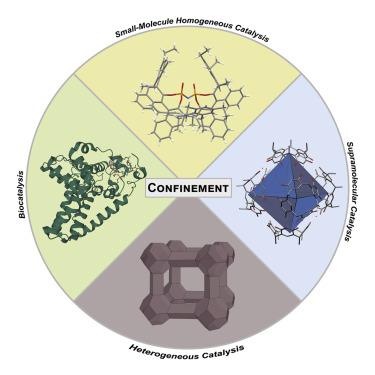Chem ( IF 19.1 ) Pub Date : 2020-09-30 , DOI: 10.1016/j.chempr.2020.09.007 Benjamin Mitschke , Mathias Turberg , Benjamin List

|
Catalysis has fascinated scientists for centuries and is one of the main pillars of the modern world economy. Achieving high reactivity and selectivity is a crucial requirement of heterogeneous and homogeneous organic, metallic, and biological catalysts. Here, we highlight an underlying principle that is relevant to the reactivity and selectivity of all types of catalysts—“confinement,” the shaping of a catalyst's active site. While this aspect has been well recognized within the fields of heterogeneous and enzymatic catalysis, and has been invoked in supramolecular systems, confinement has been less appreciated in the design of small-molecule catalysts. We identify confinement as a unifying element in the science of selective catalysis, reaching beyond the traditional boundaries of the individual subfields. A particular emphasis is given to the latest developments in the area of organocatalysis.
中文翻译:

封闭作为选择性催化的统一元素
催化已经使科学家着迷了几个世纪,它是现代世界经济的主要支柱之一。实现高反应性和选择性是非均相和均相有机,金属和生物催化剂的关键要求。在这里,我们重点介绍了与所有类型的催化剂的反应性和选择性相关的基本原理-“约束”,即催化剂活性位点的形成。尽管在多相和酶催化领域中已经很好地认识到这一方面,并且已经在超分子系统中调用了该方面,但是在小分子催化剂的设计中,对局限性的了解较少。我们认为限制作用是选择性催化科学中的统一元素,它超越了各个子领域的传统界限。











































 京公网安备 11010802027423号
京公网安备 11010802027423号